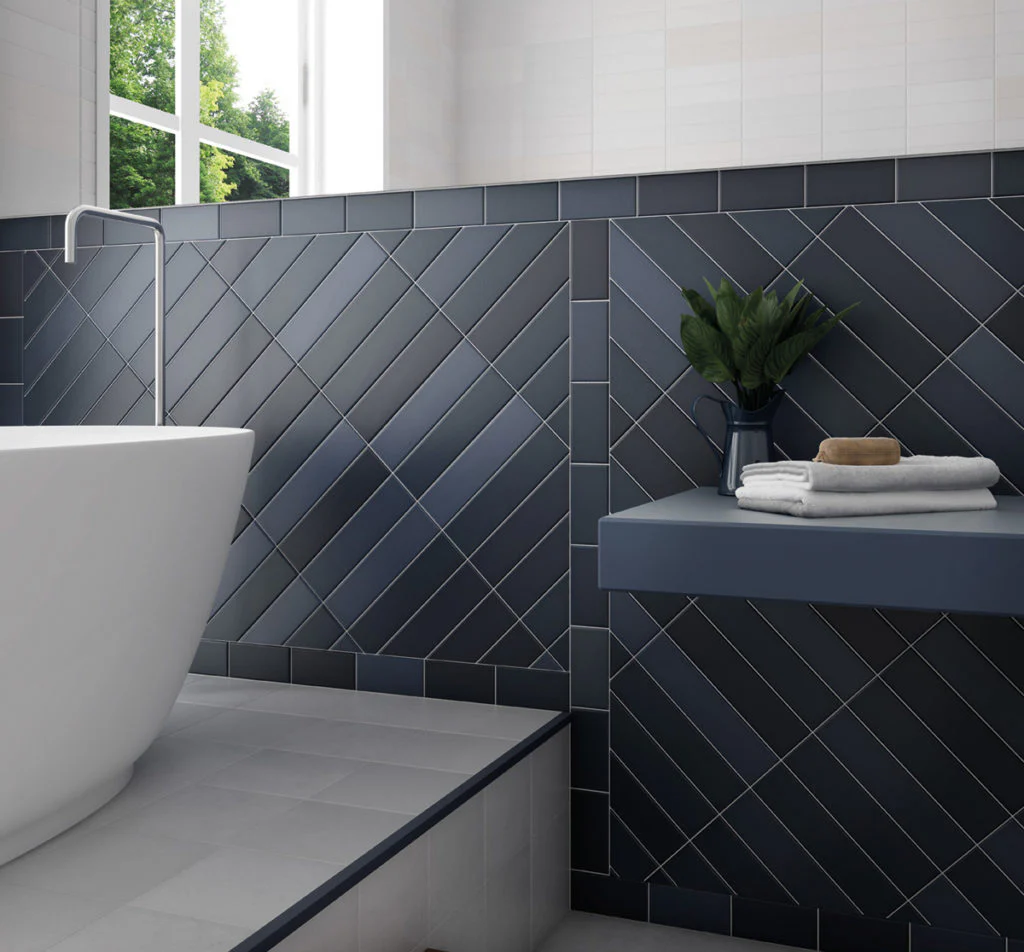Choosing the suitable tile material for your home can significantly enhance your space’s aesthetic appeal and functionality. Ceramic tiles are commonly utilized in bathrooms and kitchens due to their cost-effectiveness, easy maintenance, and abundant design choices. Due to their better durability and moisture resistance, porcelain tiles—denser and less porous than ceramic tiles—are ideal for outdoor and high-traffic areas. Natural stone tiles, such as marble, granite, and slate, bring unique, luxurious beauty to any room but require regular sealing and maintenance. Contractor tile discounts can make these premium options more accessible. Glass tiles add a sleek, modern touch and are highly resistant to stains and mold, ideal for backsplashes and accent walls. With each tile material’s various benefits, homeowners can choose the best choice for their needs, tastes in style, and financial situation.
Trending Tile Designs and Ideas
Tile designs are continually evolving, with new trends that inspire homeowners to think outside the box each year. Recently, geometric patterns have made a strong comeback, adding a contemporary flair to spaces with bold shapes and lines. These patterns can transform a simple room into an eclectic masterpiece, providing a playful yet sophisticated touch. Additionally, vibrant colors are trending, allowing eye-catching accents to break up monotonous spaces and introduce dynamic visuals.
Moreover, wood-look tiles are gaining popularity because they offer the aesthetic charm of hardwood with the robustness and water resistance of tile. These tiles are perfect for decorating living rooms and bedrooms with a warm and inviting atmosphere, as they are resistant to dents, scratches, and moisture damage.
Planning Your Tile Project
Successful tile installations start with meticulous planning. Begin by measuring your space accurately to determine the required tiles, accounting for any cuts or spare pieces. This step is crucial in avoiding the common mistake of ordering too few or too many tiles. Another critical aspect is selecting the right tile type and design based on the room’s function and desired aesthetic. For example, choosing tiles with high slip resistance in bathrooms and kitchens is essential to ensure safety.
Drafting a layout plan can help visualize the outcome, making it easier to adjust the design before beginning installation. This blueprint serves as a guide, helping to maintain balance and symmetry, even in complex patterns. It’s also wise to order extra tiles, typically 10-15% more, to cover any unforeseen breakage or cutting mistakes. This way, you ensure that your project can be completed without delays due to a shortage of materials.
Tips for Executing a Successful Tile Installation
A tiling project requires precision and the proper tools to achieve a professional finish. Start by preparing the surface, making sure it is clean, dry, and level. This step ensures that the tiles adhere correctly and are less likely to shift or crack. Use high-quality adhesive and grout for durability, and follow the manufacturer’s instructions regarding mixing and setting times. This is particularly important for natural stone tiles as they may require specific grouting methods or adhesives.
Employing spacers can help maintain uniform gaps between tiles, ensuring a consistent and polished look. A seamless fit can only be achieved by cutting tiles using a wet saw, which can provide clean, accurate edges—especially in corners and around fixtures. After laying the tiles, it’s essential to seal natural stone tiles to prevent staining and water penetration. This additional step protects the tiles, enhancing their longevity and preserving their beauty.
Expert Insights on Avoiding Common Mistakes
Common tiling mistakes can lead to costly and time-consuming issues. One frequent error is failing to properly prepare the substrate, resulting in cracked tiles and uneven surfaces. Ensuring the surface is well-prepared and level is foundational to a successful installation. Another mistake often made is using the wrong type of grout or adhesive, which can impact the durability and appearance of your tiled area. Avoiding these problems requires adhering to industry best practices and manufacturer requirements.
Additionally, having the right tools readily available can prevent many problems. Tools such as tile cutters, spacers, and grout floats are designed to help achieve a professional finish with less effort. If you are new to tiling, practicing on a small area first can help you gain confidence and familiarize yourself with the process. Before starting a more significant project, it also enables you to troubleshoot problems on a manageable scale.

